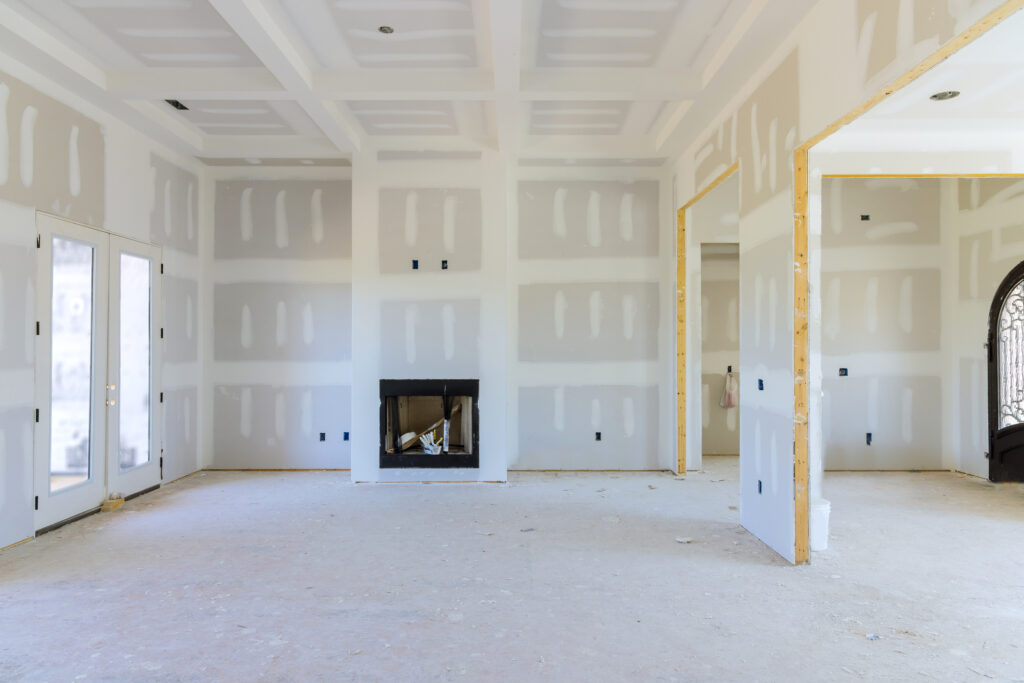When planning a home renovation—whether it’s a kitchen, living room, basement, or bathroom—many homeowners look for drywall alternatives that offer better durability, moisture-resistance, or style. While drywall is standard, it’s not always the best solution, especially in humid areas or spaces where you want a more architectural look. Exploring drywall alternatives can help you create a home that is easier to maintain and visually more unique.
In this guide, we’ll review the best drywall alternatives for both walls and ceilings, including a section focused on bathroom ceilings, so you can choose the right material for your NYC renovation.

Why Homeowners Are Choosing Drywall Alternatives
People turn to drywall alternatives for several reasons:
- Higher moisture resistance
- Better soundproofing
- Easier installation or maintenance
- More design options
- Longer lifespan in high-humidity spaces
- Reduced risk of cracking, sagging, or mold
Whether you’re renovating a loft in Chelsea or updating a bathroom on the Upper West Side, drywall alternatives can offer a smarter, more durable solution.
Best Drywall Alternatives for Walls and Ceilings
1. PVC Panels
PVC panels are one of the most popular drywall alternatives because they are durable, lightweight, and waterproof.
Ideal for:
- Bathrooms
- Basements
- Utility rooms
- Ceilings with moisture or ventilation issues
PVC panels are especially useful for bathroom ceilings, where traditional drywall tends to sag over time.
2. Cement Board
Cement board is best known for its moisture and mold resistance, making it a reliable drywall alternative for wet or humid spaces.
Benefits:
- High durability
- Fire-resistant
- Perfect base for tile
- Works on walls and ceilings
Often used in showers and wet areas, cement board is also excellent for bathroom ceilings that need extra strength.
3. Wood Planks or Wood Slats
Wood is one of the most stylish drywall alternatives, adding warmth and character to walls or ceilings.
Benefits:
- Natural texture and warmth
- Works in modern, rustic, or Scandinavian designs
- Can be moisture-treated for bathrooms
- Hides imperfections well
Wood ceilings are particularly popular in spa-inspired bathrooms and luxury NYC remodels.
4. Metal Ceiling Tiles
Metal tiles—such as aluminum or tin—provide a decorative and durable drywall alternative.
Benefits:
- Long-lasting
- Moisture-resistant
- Easy to maintain
- Adds architectural interest
These tiles work beautifully on ceilings, especially in prewar or historic apartments.
5. Fiberglass Reinforced Panels (FRP)
FRP panels are a practical drywall alternative used in both residential and commercial bathrooms.
Benefits:
- Extremely moisture-resistant
- Easy to clean
- Economical
- Durable
FRP can be used on walls and also on bathroom ceilings where low maintenance is essential.
6. Decorative Plaster
Plaster is a classic and elegant drywall alternative, known for its durability and luxury finish.
Benefits:
- Smooth or textured appearance
- Highly customizable
- Strong and long-lasting
- Great for hiding uneven walls
Plaster can be used on ceilings too, creating a polished, high-end look.
7. Drop Ceiling Systems
A suspended ceiling offers a functional drywall alternative when you need access to electrical or plumbing.
Benefits:
- Quick installation
- Replaceable tiles
- Moisture-resistant panel options
- Great for basements and older buildings
Drop ceilings are also useful in bathrooms, especially when ventilation runs above the ceiling.
Drywall Alternatives Specifically for Bathroom Ceilings
Since the main pillar page on Klein Kitchen & Bath focuses on bathroom ceiling options, here’s how drywall alternatives apply specifically to this area:
Best drywall alternatives for bathroom ceilings:
- PVC panels → waterproof, lightweight, no maintenance
- Cement board → strong and mold-resistant
- FRP panels → easy to clean, commercial-grade durability
- Moisture-treated wood slats → warm, spa-like look
- Metal ceiling tiles → stylish, durable, moisture-tolerant
Bathroom ceilings require materials that resist steam and humidity, making these drywall alternatives the most practical for long-term performance.
How to Choose the Right Drywall Alternative for Your Home
When selecting drywall alternatives, consider:
- Humidity levels (bathrooms, basements, kitchens)
- Design style (modern, luxury, industrial, minimalist)
- Maintenance needs
- Budget
- Building conditions (uneven ceilings, limited access, old plaster)
A professional renovation team can help you pick the best solution for your space.
Frequently Asked Questions About Drywall Alternatives
Are drywall alternatives more durable than drywall?
Yes, many drywall alternatives—especially PVC, cement board, and FRP—perform better in moisture and temperature changes.
Can drywall alternatives be used on ceilings?
Absolutely. Many materials like PVC, metal panels, and wood planks work beautifully for ceilings, including bathroom ceilings.
What is the most waterproof drywall alternative?
PVC and FRP panels are the most waterproof options.
Are drywall alternatives easy to install?
Most are easier than drywall and create less mess, especially PVC or drop ceilings.
Final Thoughts
Choosing the right drywall alternatives for your home can elevate your renovation, improve durability, and reduce maintenance. From moisture-resistant PVC and cement board to stylish wood and metal finishes, these options work for walls, ceilings, and bathroom ceilings alike.
If you’re exploring ceiling-specific solutions, make sure to check the full guide: Bathroom Ceiling Options


